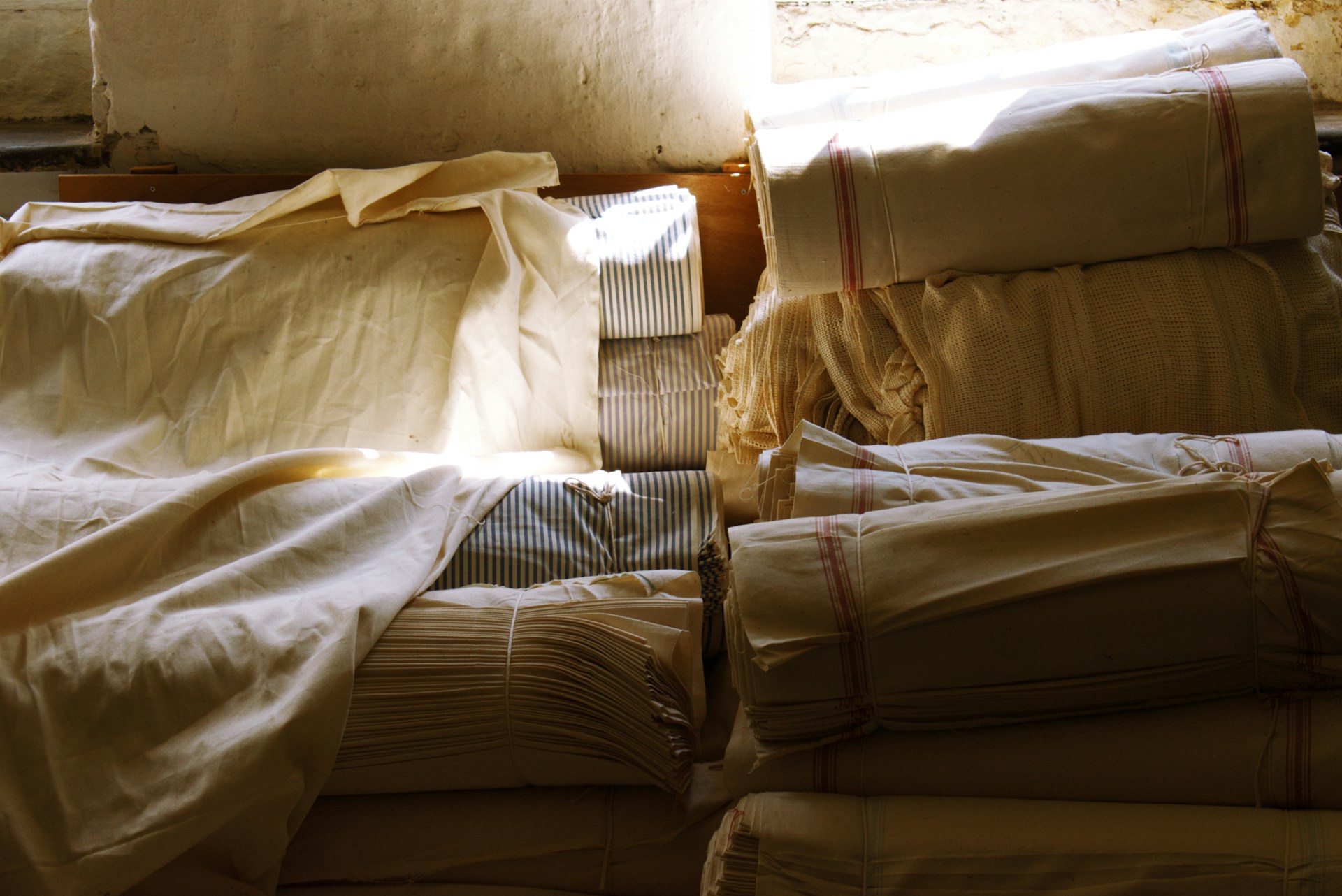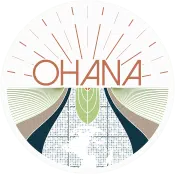
Interview With Compreli: Facing The Inconvenient Truth About Pre-consumer Textile Waste
It is well-known that the textile industry features among the highest polluting sectors on a global scale, but many of us might not be aware of how exactly it ends up producing so much waste.
Our interview with Ramesh De Silva, co-founder of Compreli Consulting, sheds light on that matter, discussing the current waste reduction challenges for textiles and the importance of industry repair initiatives to lower pre-consumer waste.
Shared from a fresh non-EU perspective, the surprising insights about sustainability and textiles contained in this piece are not to be missed! But that’s not all. This is only the first part of our enlightening conversation with Ramesh, and if you’d like to dive deeper into the topic of EU policy for non-EU players, stay tuned for part two!
Keen to learn more about the green transition within textiles straight from industry experts? Then be sure to explore Ohana’s complete interview series, which includes conversations with organisations like:
- Sustainable Fashion Academy
- Chemsec
- H&M Group
- Sympatex
- Policy Hub
- Textile Exchange
- TreeToTextile
- EOG and FESI
Want someone with deep experience and connections in the EU to help guide your sustainability strategy? Get in touch!
Getting To Know Ramesh De Silva And His Impact In Textiles
With decades of experience in the textile industry, Ramesh De Silva is a man deeply invested in improving the sector’s shocking pollution statistics. To that end, in 2015, he co-founded Compreli Consulting and is now in the process of launching his new company, Wear N Repair. Based out of Sri Lanka, Ramesh’s home country, both organisations focus on reducing textile waste generation; each in its own way. While Wear N Repair is being designed to handle garment repair services required by end customers, Compreli’s specialised teams work on the pre-consumer stage, repairing manufacturing defects, on-site, for textile companies.
To this date, Compreli’s repair specialists have salvaged a total of 7 million garments, living up to Ramesh’s mission for the company:
“Our mission is to reduce pre-consumer and post-consumer fashion waste by repairing garments, and to create a world where we prioritise repair over replacement, repurposing and recycling.”
In understanding the global impacts of policies such as the EU Textile Strategy, Ramesh has been collaborating with other local industry players to help them prepare for what’s coming. At the heart of these efforts is the support of organisations like the Transformers Foundation. A US-based non-profit, the Foundation is a support platform for the jeans and denim supply chain, and a point of contact for consumers, brands, NGOs, and media who want to learn more about ethics and sustainable innovation in the industry.
Textile Waste: An Insider’s View of Current Industry Practices
When it comes to the textile industry, the figures are never small, and during our conversation with Ramesh he shared some eye watering industry statistics that bring to light the scale of the waste issue. A staggering 100 billion garments are produced every year worldwide, but the most shocking fact is that 47% of all the fibre involved in that process ends up going to waste.
Of those 47%, he notes that 23.3% consists of repairable defective garments or other preventable waste forms, however, we currently repair only 3% of the total number of repairable garments. So it doesn’t take an industry expert like De Silva to notice that we are dealing with a huge missed opportunity from a financial standpoint, but most importantly from an environmental one.
Ramesh explains that their specialised technicians have a 99% success rate in repairing about 60 different types of manufacturing defects, but still billions of garments go to waste every year without having ever reached a customer, due to these minimal issues.
When we consider that the bulk of emissions from the textile sector take place before the products are even shipped out from the manufacturing facility, facing these numbers becomes even more urgent.
“We know that 72% of emissions happen before garments even leave the factory. So, after adding so much value and using all these natural resources, not shipping out these products is a real tragedy.”
The Truth Behind Textile Waste Generation Numbers
So why is this level of waste still commonplace within the textile industry?
From his experience dealing with textile manufacturers across Asia and Africa, Ramesh’s view is that sustainability is not yet a priority for most, and that trying to recover from losses caused by the pandemic, for example, still takes precedence.
He goes on to explain that most companies are also monitoring efficiency through very narrow metrics such as CTS, or Cut To Ship. As the name implies, this index tracks what is lost between the moment a garment is laid down to be cut and when it is shipped out of the factory. The issue with this, of course, is that this KPI leaves out all the waste generated before the cutting stage.
However, other industry practices contribute to the problem. A significant percentage of the waste results from manufacturers trying to avoid penalties imposed by client companies when production issues cause them to deliver less than what was ordered.
“Let’s say that a brand orders 100 garments. If for some reason the manufacturer ships 90, they will be penalised for the 10 garments missing. So, to cover themselves in case there’s any issue in the process they choose to overproduce. They end up manufacturing 110 for every order of 100 units, and those extra 10 become waste. If we can repair the fallout, there will be no need for overproduction.”
Making Textiles Green: Essential Changes Regarding Waste
If generating waste to avoid a financial loss seems like a good idea now, that is about to change with the enforcement of new sustainability legislation by the EU.
Updating Textile Business Practices
Policies such as the ESPR and the EU Extended Producer Responsibility Schemes will soon make environmental disregard bad for business, and non-EU textile players currently supplying EU brands will have to adjust their conduct to stay in the game.
In Ramesh’s opinion, expanding their capabilities to make repairs at a pre-consumer stage will be essential to the future of textile manufacturers, along with a significant mindset change.
In addition to looking at pre-consumer repairs as a strategic investment to support business growth, textile companies must consider placing the matter of sustainability under a clear departmental structure and leadership.
“Many small and even middle-sized companies don’t have a Chief Sustainability Officer. They have a Compliance Officer to ensure that the human rights side is okay, that garments are packed appropriately, things like that. But they haven’t got into that sustainability frame of mind. In the end, nobody in these companies is really looking at how to prepare for the new regulations, because there is no one in charge of it.”
De Silva also mentions that companies need to organise themselves to start collecting and assessing the correct data, which includes expanding their current business KPIs. More specifically, he suggests changing the focus from the popular Cut To Ship (CTS) index to monitoring the company’s Received To Ship (RTS) ratio.
“Most companies don’t look at a KPI called RTS. But this is really important, because it measures how much of the material received for production is actually being shipped out, and tells you the story about all that’s leftover in the factory.”
A New Scope for Sustainability Legislation
Our interviewee adds that the RTS KPI should also serve as a basis for new textile sustainability legislation. He highlights that current policies mostly focus on post-industrial waste and overlook a huge part of the waste problem, which lies within manufacturing facilities and in the pre-consumer stage.
Once transparency and traceability become mandatory components of the textile industry, providing information on the sourcing, processing, and production of fibres and materials throughout the supply chain will illuminate the true extent of pre-consumer waste. This will compel manufacturers to devise strategies to mitigate waste, consequently increasing demand for repair services.
“Right now, the buzzword is still recycling, but if you look at the waste hierarchy, repair comes way earlier than recycling. Repair should then be an absolute priority, especially at the pre-consumer stage.”
Ramesh finalises this part of our conversation by stating that a repair culture is at the centre of any realistic solution for the environmental impact of textiles and must be incentivised through legislation.
“I don’t think a lot of people are aware that there’s a 47% waste in textile production, but that’s the inconvenient truth about how the industry currently operates. What I advocate for is the introduction of new legislation to make repairing a best practice at the pre-consumer stage. So we can move from that inconvenient truth to a new industry best practice.”
If you enjoyed this piece, stay tuned for part two of our interview with Ramesh. And if you would like to know more about how to prepare your organisation for the upcoming changes in textiles, get in touch! The experts in the Ohana team are ready to help.
Want someone with deep experience and connections in the EU to help guide your sustainability strategy? Get in touch!
Join our newsletter to keep up to date with the latest news and information coming out of the EU.


